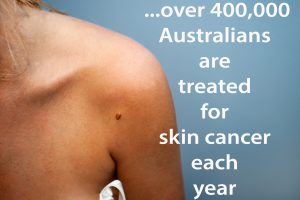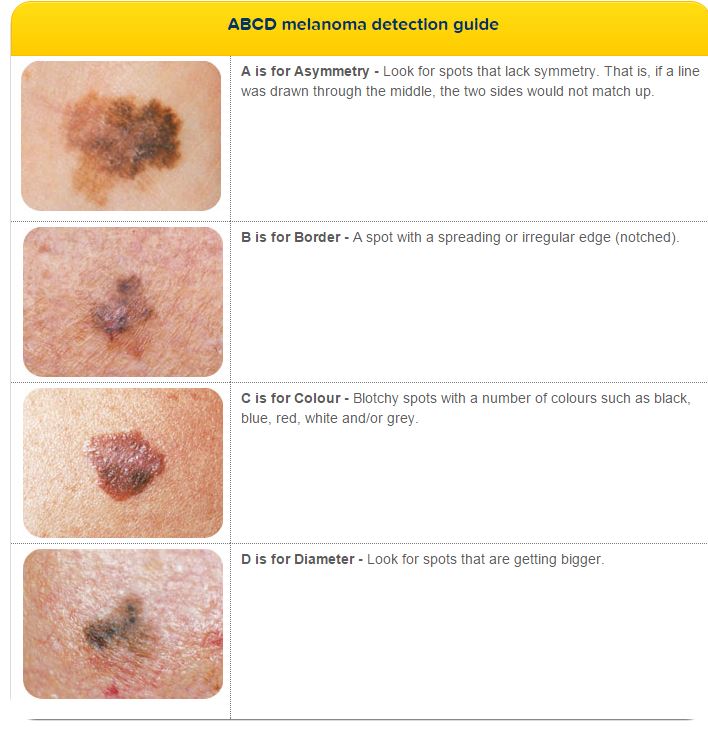 Australia has one of the highest rates of skin cancer in the world. It makes up 80% of all newly diagnosed cancers and over 400,000 Australians are treated for skin cancer each year.
Australia has one of the highest rates of skin cancer in the world. It makes up 80% of all newly diagnosed cancers and over 400,000 Australians are treated for skin cancer each year.
Clearly preventing skin cancer in the first place is essential. But so is detecting and treating skin cancer as early as possible.
What is skin cancer?
Most skin cancer is caused by exposure to UV (ultra violet) radiation in sunlight. UV radiation damages the DNA (genes) in your skin cells, which can turn them into cancer cells.
This damage occurs when you get sunburnt, but also just from tanning. So minimising UV radiation is the best prevention – including sunscreen and wearing protective clothing and hats.
There are three main types of skin cancer cells:
- Melanoma: Least common, but most dangerous. If left untreated it can spread quickly to other parts of your body.
- Basal cell carcinoma and Squamous cell carcinoma; Together called ‘non-melanoma skin cancer’, they’re most common, but less dangerous.
Skin cancer is usually treated by removing the cancer cells. Methods include: radiation therapy, ointments, surgery, scraping (curettage), freezing (cryotherapy) and burning (cautery).
How to spot skin cancer
People with skin cancer, or people they live with, are usually the first to notice it. But rather than waiting to find it by chance, it’s recommended that you be proactive and regularly check for new spots and changes to existing skin moles.
Your GP can discuss the available methods for spotting skin cancer. For example, a method that’s been successfully used for many years to detect melanoma is the ABCD Rule for identifying changes to the appearance of a skin mole:
Asymmetry
Border irregularity
Colour variation
Diameter larger than 5 mm
However, because the ABCD rule may not always predict with accuracy whether a mole is harmless or cancerous, it may be suggested to you to just use the AC (Asymmetry and Colour variation) Rule.
There’s also a particular type of melanoma called ‘nodular melanoma’ that doesn’t fit well with the ABCD Rule. It may be better detected with the EFG Rule, which is ‘Elevated, Firm and Growing for more than a month.’
For more information: Speak with your GP, Cancer Council Australia Phone 13 11 20 www.cancer.org.au, Skin Cancer Foundation www.skincancer.org


